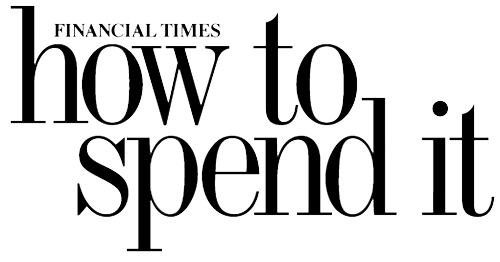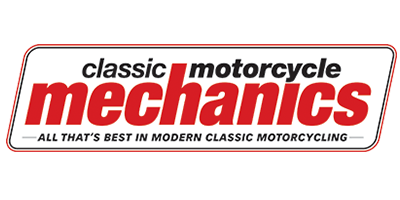Back in the day, when I used to scour Ebay looking for classic motorcycles, I would often read the sentence “Official UK bike, none of this imported crap”. Let’s just deconstruct this sentence and see if such “Ebayers” have a serious point. Your alternative investment should not only be fun, but is also an investment and store of wealth, a way of protecting your hard earned savings. And let’s face it, you wouldn’t want to buy an MV Agusta Magni, or a Ducati 996 SPS, just to find out that you’ve bought some “imported crap” now would you?
I used to be a “grey” marketer, or to use the correct term, a parallel market motorcycle trader. Between 1995 and 1999 I used to supply 1.5% of all the new motorcycles in the UK. For further information about this, I will be releasing further articles about the motorcycle market during this very interesting, and defining, period of the UK motorcycle market in the future, as it is relevant to emerging market classic motorcycles and their desirability.
This applies to all motorcycle manufacturers, but let’s use Kawasaki as an example, especially as I love Kawasaki Z900s. The Kawasaki factory in Japan, produce a motorcycle for sale in the UK. They sell it to Kawasaki Europe, who adds a margin. Kawasaki Europe then sell it to Kawasaki UK, who add a margin. Kawasaki UK add a margin and they sell it to a UK Kawasaki dealer and the UK dealer add their margin and sell the Kawasaki to you. With a European manufacturer, let’s use Ducati as an example because with European manufacturers selling in Europe there is one less margin. The Ducati factory sells the motorcycle to Ducati UK. Ducati UK sells the motorcycle to the UK dealer and the UK dealer sells the Ducati motorcycle to you, each adding their margin along the chain. That’s still an awful lot of margins on a new motorcycle, especially in the networked age.
I used to buy new motorcycles from an importer who bought their motorcycles direct from the Honda factory in Japan, let’s say Honda South Africa. I sold that Honda motorcycle to the UK dealer and the UK dealer would sell that motorcycle to the UK end user. So the motorcycles I used to supply, used to go through less hands, which meant less companies all putting their margin on each unit. I also used to work to finer margins than the official importers. I used to order motorcycles in UK specification, exactly the same specification as Honda UK took delivery of their motorcycles. I also ordered new motorcycles from the big four Japanese manufacturers in any specification for any market. They were all produced, brand new in the big four factories to the same specification as the official importers. So what is so “crap” about that? Same motorcycle same specification, but a lower price. This was when an official Honda CBR900RR was £9,250 from your Honda dealer and £6,999 from your parallel market dealer.
I even remember being in a client’s shop and a customer was staring at a yellow and purple CBR900RR I had supplied, brand new, with a very puzzled look on his face. He kept inspecting the motorcycle, looking at the price tag and scratching his head. My client asked if he could help. The confused customer asked if it was a grey market motorcycle. My client said it was. The customer then asked why it wasn’t grey. My client asked what the gentleman meant. He told my client that he thought that all grey market motorcycles were grey in colour and sold cheaper to unofficial dealers, because grey was an unpopular colour.
I supplied such parallel market motorcycles until a very nasty bit of European legislation reared its ugly head and made it illegal to sell any new, or used, motorcycle imported from outside the European Union without the brand owners consent. So we stopped selling such motorcycles after Honda prosecuted four dealers in Belgium and four in the UK for such activities.
So why would a Ducati, or Honda, or Yamaha, or Kawasaki, or Suzuki, or Triumph, or Harley-Davidson, or BMW motorcycle made in their respective factories be “imported crap”? They were all made in their respective factories and to the same specification as the officially imported motorcycles. Honda don’t make crap motorcycles for the Spanish motorcycle market and only the good ones go to the British market. The truth is imported motorcycles are not crap. Even the officially imported motorcycles are imports. There are some differences in specifications, usually the headlight and speedometer. There are exceptions to this, and I will shortly be publishing an article about such exceptions and what to be aware of with which models, regarding the differences. But if we are looking at such machinery as Kawasaki Z900s, Honda CB750s, Suzuki GS1000s, Yamaha RD400s and other emerging market classic motorcycles from this era, then we are really only looking at a headlight and speedo. Sometimes there colour differences, especially in the USA.
So, our friend the “Ebayer” believes that a Ducati motorcycle, produced in the Ducati factory, with a kilometre speedo and a headlight unit that dips to the right, instead of the left is “crap”. It doesn’t really make sense. They are exactly the same motorcycles produced in the Ducati factory as the motorcycles that Ducati used to import into the UK. I am generally referring to motorcycles produced between the war and the mid 1980s here, afterwards it does get a little more complicated, but if you know what you are buying, then you can find you have a far better quality classic motorcycle than a UK specification motorcycle. To see why so many classic motorcycles purchased for the foreign market are often in better condition and more original than officially imported UK motorcycles, then read my article So quite often, a classic motorcycle imported from another country, rather than having spent its life in the UK, can have a higher value than an officially imported UK motorcycle. What’s crap about that?
BUT! Buyer beware! Many investors are flocking to the new V-twin limited editions of the Ducatis and rolling the dice on them. Yes the Desmosedici is a future classic but it’s only a few years old and will take time to properly mature. These new V-twin Superleggeras will drop in price before they ever go up, if they ever do go up. There is a lot of speculation in this area of the market and, I believe, the Desmosedicci will become very valuable and the expensive high powered V-twins will never perform like the old Bevel drives. Also there is another serious issue with these motorcycles along with 916/996 SPs and all high powered sports bikes over 85 horse power. The Swiss and French market are restricted to between 85 and 106 horsepower and these machines carry an unwanted stigma for investors! Serious classic motorcycle investors will always avoid them like the plague. Swiss specification machines cannot be de-restricted. Machines destined for the French market are restricted either with a retro-fit kit or at the factory. Either way the machine will never be original. Classic motorcycles are only original once. So if you want to buy a machine destined for the French market then it will be 100 horse power, or it will no longer be original. If it’s been restricted through the fuel management system the the entire system will need to be flashed and re-mapped, which can lead to it never performing properly. Great if you’ve bought a French Desmosedici and it can only huff it’s way to 106 of the original 200 horsepower. Awful if the fuel management system is then broken into and de-restricted, if it can be, and then still doesn’t give you the horses you were expecting. Or if it was tampered with by the importer to have a restriction kit fitted and then removed. No investor will touch such a motorcycle. Fine if you want to take a chance, de-restrict it and rag the life out of it and hope you’ve got a bargain as such motorcycles can be picked up for a song. The Swiss and French market motorcycles are worth a fraction of a full power market motorcycle, but they are not and never will be investment grade classic motorcycles. If you want to know more about investment grade classic motorcycles then read my article here. Restricted power market classic motorcycles are, and have always been, toxic as classic motorcycle investments. Avoid them at all costs.
If you want to know more about investing in classic motorcycles, or about the market, call Paul Jayson, The Motorcycle Broker, on 01803 865166. And good luck and happy riding.
- Most collectible Ducati 916 SP - June 20, 2024
- Classic Motorcycles: To ride or not to ride? - June 17, 2024
- Classic Motorcycles: To ride or not to ride? - June 17, 2024







